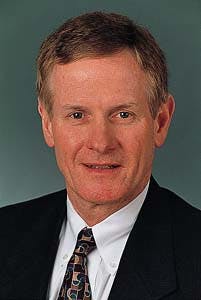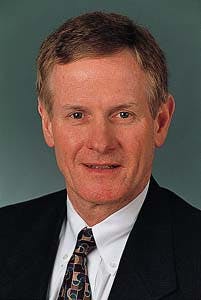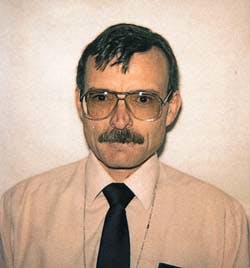Thomas C. BaileyIn September 1997, the largest South American hydrogen facility started up at the Amuay refining complex of Petroleos de Venezuela SA (Pdvsa).
BOC Gases Inc.
Murray Hill, N.J.John W. Hemmings
Foster Wheeler Power Systems Inc.
Clinton, N.J.
The new plant, engineered, built, owned, and operated by a joint venture between BOC Gases Inc. and Foster Wheeler Power Systems Inc., can supply up to 50 MMscfd of hydrogen.
Located on the Paraguana peninsula in northwest Venezuela, the Pdvsa Amuay refinery is one of the world's largest refineries, capable of processing up to 571,000 b/d of crude oil. Faced with the need to meet stringent Clean Air Act standards for U.S. exports, Pdvsa had a pressing need for more hydrogen.
The BOC/FW venture employed a financial structure that marks the first significant outsourcing arrangement for the Venezuelan refining industry. BOC and Foster Wheeler assumed the design, construction, and operation of the new hydrogen plant. After 300,000 manhours of construction, the project was completed 3 months ahead of schedule, within budget, and with no personnel injuries.
The BOC/FW responsibilities include design, engineering, construction, and start-up of the plant; securing of permits; operation of the plant for 15 years or longer; provision of ongoing performance guarantees that focus on availability, cost, and quality issues; and provision of a reliable source of product hydrogen. Primarily, Pdvsa is responsible for the purchase of hydrogen in addition to fuel and feedstock. Table 1 [6,757 bytes] shows the details of the risk allocation.
Hydrogen plant design
To provide high-purity hydrogen at a low cost, BOC/FW chose to use a modular, or prefabricated, construction of the reformer system. The advantages of a modular system include a smaller footprint, greater ability to ship shop-assembled ready-to-go components, and the increased ability to meet or exceed construction deadlines.BOC/FW chose the Foster Wheeler Terrace-Wall reformer (TWR). Plant economics (an evaluation of investment vs. fuel and steam costs) dictated that the reformer furnace not use a combustion-air preheat system. Instead, the TWR uses ambient air for the burners and a natural draft stack.
Features of the TWR's efficient configuration include a two-cell radiant section, a top-mounted convection section, a top-mounted exhaust stack, a reformer waste-heat exchanger "close-coupled" between the radiant cells, and a steam drum mounted on the furnace. Importantly, this compact plan does not compromise accessibility or ease of operations.
The radiant-section configuration readily allows maximum shop assembly and prefabrication; it was limited only by shipping and delivery clearances. Each of the two radiant cells was shipped in five modules. Each module was completely shop assembled with steel casing, refractory lining, burner tiles, and the complete radiant coil assembly (radiant inlet header through radiant outlet header) in place. The ten modules were erected in less than 1 week.
The plant was designed to deliver hydrogen at 970 psig. BOC/FW decided that the most economical design was use of a single-stage product-hydrogen compression. To get a single compression stage, the operating pressure of the Pdvsa plant was set to deliver hydrogen to the compressor at 400 psig. This required a reformer outlet pressure of 454 psig, a level well within the performance of modern alloy tubes.
Two compressors, each capable of providing 100% of the required compression, are provided for reliability. Each machine has four cylinders. One cylinder is on natural gas feed, and the others are "in parallel" (single stage) on product hydrogen. This split-service design cuts the number of required compressors in half.
Process description
The following description provides details of how the hydrogen is produced at the Pdvsa plant. Fig. 1 [27,732 bytes] traces the process flow.- Feed compression. Natural gas flows into the unit through the natural-gas compressor suction knockout drum to eliminate any liquids in the stream. It then flows into the natural-gas cylinder of the on-line compressor, where it is compressed.
Each of the two compressors can supply 100% of the feedstock. Usually, one is operating while the other remains on standby. - Feed purification. A feed gas oil filter removes compressor lube oil from the feed gas. The feed is then heated within the hydrocarbon preheat coil in the convection section of the reformer. The temperature of feed is controlled as it migrates to the inlet of the sulfur absorber at 700-750° F. The gas then passes through the sulfur absorber, which contains a bed of ZnO sulfur absorbent.
- Reforming. Desulfurization complete, the purified gas is then mixed with steam. Process steam is preheated in a coil in the convection section of the reformer and mixed with the hydrocarbon feed. After the steam-hydrocarbon mixture is preheated, the mixture passes through catalyst-filled tubes in the radiant section of the reformer. Here, the hydrocarbons are reformed over a nickel catalyst to produce hydrogen (H2), carbon monoxide (CO), carbon dioxide (CO2), and methane (CH4).
The process gas leaving the reformer is cooled and controlled at 650-675° F. in the reformer waste-heat exchanger (E-103), in which heat is recovered by generation of high-pressure steam on the shell side. An internal bypass controls gas-outlet pressure.
Heat in the flue gas leaving the radiant section is recovered by mixed feed heating, steam generation, steam superheat, and feed-gas preheating coils that reside in the convection section of the reformer. - Shift conversion. When gas enters the shift converter at 650° F., the CO reacts exothermally over an iron-oxide catalyst, heating the gas to 760-787° F. This reaction with steam removes CO from the process gas while forming H2 and CO2.
- Gas cooling and condensate recovery. The gas is then cooled in a boiler-feedwater (BFW) preheater, which preheats BFW for the steam generation coils and cools the gas to 380° F. The gas leaving the BFW preheater is cooled in the raw gas cooler and a raw-gas trim cooler. The mixture of process condensate and process gas leaving the raw-gas trim cooler is separated in a cold-condensate drum. Process condensate, which contains dissolved gases, then flows from the deaerator (DH-101) under level control for CO2 stripping and is subsequently recycled as BFW.
- Hydrogen purification. The raw hydrogen from the cold-condensate drum flows to the pressure swing adsorption (PSA) unit. Arranged as two parallel, five-bed units, this package contains ten fixed beds of solid adsorbent. The raw hydrogen flows through the beds, where impurities are adsorbed, leaving high-purity hydrogen (99.9 vol %). The unit operates cyclically; at any given time, two beds are on-line and eight beds are in various stages of regeneration.
Regeneration is achieved by depressurizing in sequential equalization steps, followed by purging to displace adsorbed gases. After regeneration, the bed is repressurized with product hydrogen. - Hydrogen compression. Purified hydrogen is cooled in a product compressor suction cooler from 105° F. to 95° F., and compressed in a single stage from 399 psig to 974 psig, marked by a temperature rise to 250° F. After being cooled by an air cooler, the hydrogen is exported to the Pdvsa refinery. The hydrogen compressor can be unloaded in incremental steps if necessary to operate at a reduced rate.
- BFW and steam generation. This BFW system supplies BFW for the hydrogen plant. Process condensate from the cold-condensate drum and imported demineralized water are used as makeup water. The combined stream is stripped in the deaerator (DH-101) to ensure complete removal of all dissolved gases, such as oxygen and carbon dioxide.
For oxygen scavenging and scale corrosion control, BFW is pumped at 242,500 lb/hr to the steam drum, which is located at the reformer. The continuous blowdown from the steam drum is combined with intermittent blowdown, and then flashed at atmospheric pressure in the intermittent blowdown drum. The flashed water is pumped to the cooling-water return line. - Steam system. Saturated steam is produced at 690 psig. The steam generation equipment consists of the steam drum, the reformer waste-heat exchanger (E-103), and the steam generation coil and steam superheater coil in the reformer's convection section.
The reformer waste-heat exchanger (104 million BTU/hr) is a natural circulation boiler. BFW circulation pumps force circulation through the convection coil. A major part of the steam, 131,250 lb/hr, is used in the process. Part of the steam is used by turbines and is delivered to DH-101 to use as stripping steam. The excess superheated 600 psi steam is exported to the Pdvsa refinery. - Fuel gas system. Once on-line, the reformer burns tail gas formed in the PSA unit as its primary fuel, which is supplemented by natural gas to maintain required temperatures. Tail gas flows from the PSA unit directly to the reformer burners.
Natural gas is used as the supplemental fuel except during start-up, when natural gas is the only fuel used.
The Authors
Thomas C. Bailey is director of refinery marketing for BOC Gases Inc. in the Americas. Previously, he has held positions in BOC marketing, sales, procurement, and production. Bailey has over 17 years' experience in the industrial gas industry. He holds a BS in mechanical engineering from Texas A&M University, and an MBA from the University of Texas at Austin.
John W. Hemmings is project development manager for hydrogen and syngas technology at Foster Wheeler Power Systems Inc. He has 20 years of experience in coal and heavy oil gasification, advanced power systems, and hydrogen plants, including 5 years at Foster Wheeler. He has been involved with projects in South Africa, the U.S., and Chile. Hemmings holds a BS in chemical engineering from the University of Witwatersrand, South Africa, and an MBA from the University of South Africa.
Copyright 1998 Oil & Gas Journal. All Rights Reserved.




